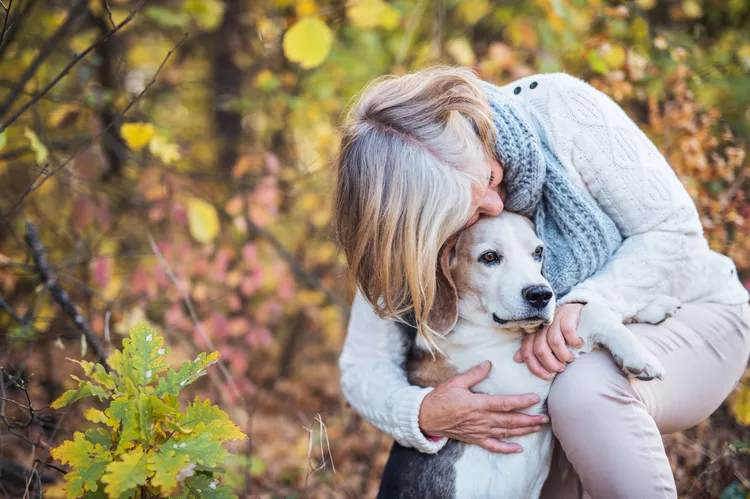Do Older Dogs Get Menopause?

Female dogs and female humans may have some things in common but when it comes to menstrual cycles there are differences. Knowing what to expect with your female dog as she ages can help you differentiate between what is normal and what may be a problem.
What Is Menopause in People?
Menopause occurs in human women when they stop having a period due to the decrease in the production of hormones. These hormones are called estrogen and progesterone. Menopause normally occurs in women in middle age but exact ages can vary from person to person. Once a woman has not had a period for a year they are said to be going through menopause and after menopause, a woman is not able to get pregnant naturally. Women who have gone through menopause do not get their periods.
What Is a Heat Cycle in a Dog?
Female dogs go through a heat cycle, which is somewhat similar to a period in a human, every 6 to 13 months or so. During a heat cycle, a female dog that has not been spayed will have a swollen vulva and bleed from its vaginal opening during the phases known as proestrus and estrus. This is sometimes referred to as a dog's period but is not the same thing as a human goes through. A dog usually bleeds for about 10 days (although some dogs don't have visible blood at all and others may bleed for up to 27 days) but this is just part of the heat cycle. The entire heat cycle includes additional phases known as diestrus and anestrus when the signs of visible 'heat' dissipate and this extends until the next round of 'heat' occurs.
A heat cycle is also known as an estrous or reproductive cycle and a dog may be referred to as being "in heat" during the time when signs of bleeding and receptivity to males are observed. It occurs in female dogs when their bodies are ready to reproduce and is the only time a dog can get pregnant.
What Does Spaying a Dog Do?
Spaying a dog removes its reproductive organs, specifically the ovaries and the uterus. This procedure is called an ovariohysterectomy and is commonly performed on puppies starting around six months of age. Spayed dogs who have had a complete ovariohysterectomy will not have heat cycles, not bleed vaginally, are unable to become pregnant, and cannot develop diseases of the uterus including infections known as pyometra.
Does a Dog Go Through Menopause?
No, dogs do not go through menopause like humans do. Dogs that have not been spayed will continue to have heat cycles, and therefore bleed once or twice a year, for their entire lives unless they are pregnant or get spayed. As an unspayed female dog ages, its risk for developing a pyometra after a heat cycle increases. Pyometra can be a life threatening infection and requires immediate veterinary attention. This infection of the uterus can produce a vaginal discharge that includes blood in it so some pet owners may think their dog is simply going back into heat but that is not the case. These dogs also usually feel sick due to the infection and will have other signs such as lethargy, decreased appetite, fever, and/or a swollen abdomen.
Some dog owners may not realize how often their unspayed dog goes through a heat cycle. Because of this, they may think their dog has stopped having heat cycles if it's been almost a year since they saw any bleeding. But older unspayed dogs also may not have heat cycles as often as younger dogs so the time between cycles can start to increase. This increase in time between heat cycles is not the same as menopause, though.
Concerns for Unspayed Female Dogs
If you have an unspayed female dog there are some risks you should be aware of. Mammary cancer, uterine cancer, ovarian cancer, pyometra, and pregnancy are all things that can happen to a dog that has not been spayed. These reasons are why your veterinarian will recommend having your dog spayed.
Other Reasons a Dog May Bleed
A dog being in heat or having a pyometra are not the only reasons why a dog may bleed vaginally. Blood may also be seen in that area of your dog due to a urinary tract infection, bladder stones, bladder cancer, uterine cancer, tumors, bleeding abnormalities or other discreet reasons. This blood may be seen when the dog urinates, after it is lying on the ground, or on its fur. If you suspect your dog is bleeding from this area you should contact your veterinarian.